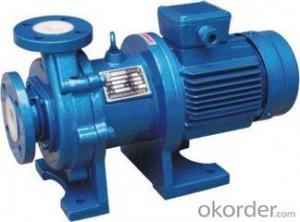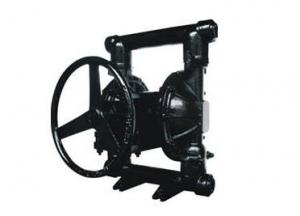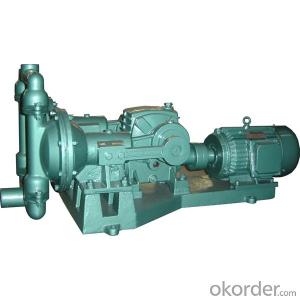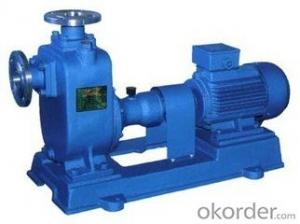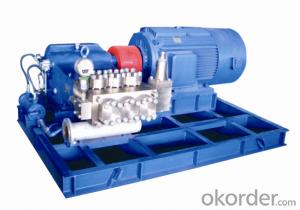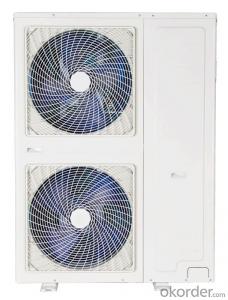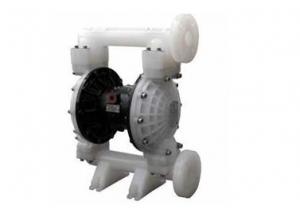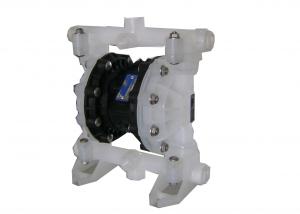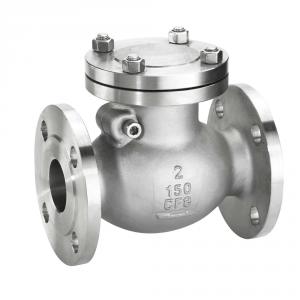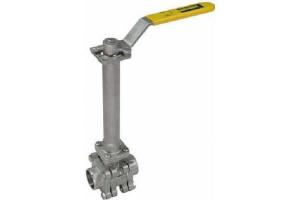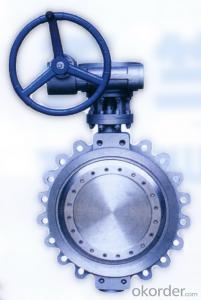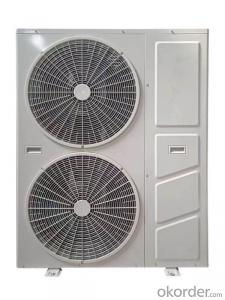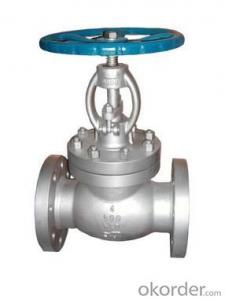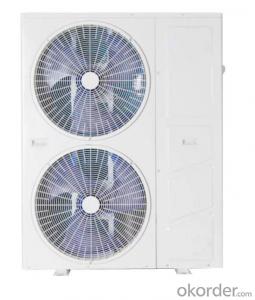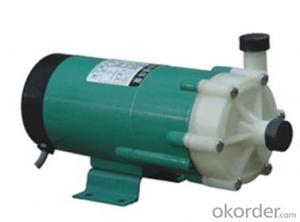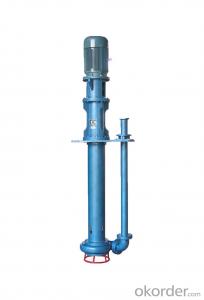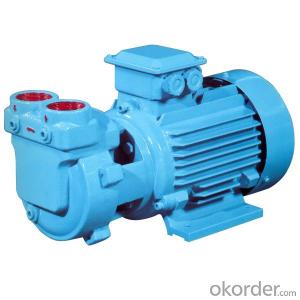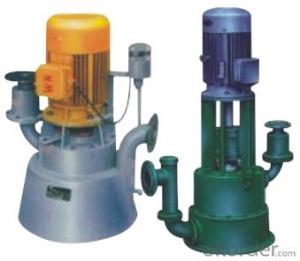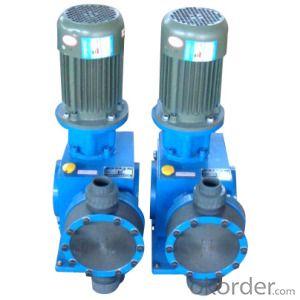CQB-F MAGNETIC DRIVE PUMP- PLASTIC TYPE
- Loading Port:
- Shanghai
- Payment Terms:
- TT OR LC
- Min Order Qty:
- 5 unit
- Supply Capability:
- 20 unit/month
OKorder Service Pledge
OKorder Financial Service
You Might Also Like
CQB - F type lining fluoride magnetic pump flow components adopt "
poly 2 fluoroplastic alloy (PVF2) and ultra-high molecular weight
polyethylene (UHMWPE) manufacturing.At room temperature,
PVF2 of halogen, halogenated hydrocarbon, strong oxidant, boiling
acid, alkali and other organic solvent has good corrosion resistance;
UHMWPE for non oxidizing acid (dilute sulfuric acid, nitric acid and large
concentration hydrochloric acid, phosphoric acid, hydrofluoric acid,
formic acid, acetic acid), ammonia, amine and various alkali and salt
solution has good corrosion resistance, two kinds of materials are not
resistant to strong oxidizing acid corrosion.Fluorine alloy pump shell for
metal materials, have enough strength to bear pipeline and mechanical
shock from the outside.Transmission power below 3 kw adopt full fluorine structure.
A, CQB - F fluorine-butterfly summary of magnetic pump.
CQB - F type fluorine plastic magnetic drive pump leak proof design
cancelled the shaft seal, using magnetic coupling indirect drive, completely
eliminates the drip, no pollution using field.Due to the pump parts choose
the fluoroplastic alloy manufacture.Can be continuous conveying any concentration
of strong acid, alkali, oxidant and other corrosive medium and not damaged.
Second, CQB - F type fluorine-butterfly magnetic pump working principle:
Fluorine-butterfly magnetic pump drives the active magnet coupling directly on the
motor shaft, pump room is completely closed, indirectly by magnetic coupling drive
pump impeller rotating shaft with magnet structure is compact, safe and energy-saving.
Fluorine-butterfly robust magnetic pump pump body structure while the contact liquid
part is fluorine plastic, but the pump shell is the metal material, so the pump body is
enough to sustain the weight of the pipeline and by mechanical shock.
Three, CQB - F type lining fluorine magnetic pump main use:
CQB - F type fluorine plastic magnetic drive pumps are widely used in: petrochemical,
acid alkali production, non-ferrous metal smelting, cars made in pickling technology,
rare earth separation, pesticide, dye, medicine, paper making, electroplating industry,
radio, etc.Use the temperature: - 20 ℃ to 100 ℃.
- Q:Can an air pump be used for inflating air cushions for wheelchairs?
- Yes, an air pump can be used for inflating air cushions for wheelchairs.
- Q:Can an air pump be used for fireplace bellows?
- No, an air pump cannot be used as a substitute for fireplace bellows. Fireplace bellows are specifically designed to provide a steady flow of air to stoke the flames and increase their intensity. An air pump, on the other hand, is typically used for inflating objects and does not provide the same controlled airflow required for a fireplace.
- Q:Can an air pump be used for inflating air cushions for medical purposes?
- Yes, an air pump can be used for inflating air cushions for medical purposes. Air cushions are often used in medical settings to provide support and comfort for patients who are bedridden or sitting for extended periods of time. These cushions help to distribute pressure evenly and reduce the risk of developing pressure ulcers or sores. An air pump can be used to inflate these cushions to the desired level of firmness, providing the necessary support and comfort for patients. Additionally, air pumps are often designed to be easy to use and portable, making them convenient for medical professionals to use in various healthcare settings.
- Q:How does an air pump regulate the flow of air?
- The flow of air is regulated by an air pump through the utilization of various mechanisms that control both the pressure and volume of air being pumped. This guarantees a steady and managed flow of air for different purposes. At the outset, an air pump typically comprises a motor that propels a piston or impeller. As the motor rotates, the piston or impeller compresses the air, generating pressure. The compression process reduces the air's volume, leading to an increase in pressure. To regulate the air flow, valves are often integrated into air pumps. These valves are designed to open and close at specific pressure thresholds. When the pressure within the pump reaches a certain level, the valves open, allowing air to escape. Conversely, when the pressure drops below a certain threshold, the valves close, preventing air from escaping. Furthermore, certain air pumps are equipped with adjustable settings or controls that enable users to manually regulate the air flow. These settings may involve adjusting the motor's speed, modifying the position of the valves, or changing the compression ratio of the piston or impeller. By manipulating these settings, users can finely adjust the air flow rate according to their specific requirements. To summarize, an air pump regulates the flow of air by compressing it to increase the pressure, utilizing valves to control the release of air, and often incorporating adjustable settings to fine-tune the flow rate. This combination of mechanisms ensures a controlled and consistent flow of air for a range of applications, such as tire inflation, operation of pneumatic tools, or provision of air supply to aquariums.
- Q:Are there air pumps that can be operated with a remote control?
- Yes, there are air pumps available in the market that can be operated with a remote control. These remote-controlled air pumps provide convenience and ease of use, allowing users to inflate or deflate various items from a distance without needing to manually operate the pump.
- Q:How does an air pump handle different inflation pressure settings?
- The purpose of an air pump is to adjust the amount of air it pumps into an object in order to achieve the desired pressure level. This is accomplished through the use of a pressure gauge or digital display on the pump itself. By setting a specific pressure level on the pump, it will automatically monitor the current pressure inside the object and adjust the airflow accordingly. If the pressure is lower than the desired level, the pump will increase the airflow to inflate the object until the set pressure is reached. Conversely, if the pressure is higher than the desired level, the pump will decrease the airflow to prevent over-inflation and maintain the specified pressure. To achieve this, air pumps are equipped with valves and regulators that control the airflow and pressure. These mechanisms ensure that the pump can accurately measure and adjust the inflation pressure based on the set level. In addition to manual pressure settings, some air pumps also offer preset inflation options for specific objects such as sports balls, bicycles, or inflatable mattresses. These presets are programmed to provide the optimal pressure level for each object, simplifying the inflation process and eliminating concerns about over or under-inflation. Overall, an air pump continuously monitors and adjusts the airflow based on the desired pressure level to properly inflate an object without causing any damage or issues.
- Q:How does an air pump handle different user interface designs?
- An air pump handles different user interface designs by incorporating various features and mechanisms that allow users to interact with the device in different ways. The user interface design of an air pump typically includes buttons, switches, and dials that enable users to control the pump's functions and settings. Depending on the specific design, an air pump may have a digital display that shows information such as pressure levels, inflation time, or battery status. This display can be operated using touch-sensitive controls or physical buttons, allowing users to navigate through menus and adjust settings as needed. Furthermore, some air pumps may feature wireless connectivity and compatibility with mobile applications. In such cases, the user interface design may involve a smartphone or tablet app that provides a more intuitive and customizable interface. This allows users to control the air pump remotely, monitor inflation progress, and even save preferred settings for future use. Regardless of the user interface design, air pumps are typically designed to be user-friendly and accessible to a wide range of individuals. Manufacturers ensure that the controls and indicators are clear, straightforward, and easy to understand, minimizing the learning curve for users. Additionally, safety features like automatic shut-off or pressure sensors may be included to enhance usability and prevent any potential issues or accidents. Ultimately, the goal of an air pump's user interface design is to provide a seamless and efficient experience for users, regardless of their familiarity with technology or their specific needs and preferences.
- Q:What is the maximum weight an air pump can lift?
- The maximum weight an air pump can lift depends on various factors such as the size and power of the pump, as well as the design and capacity of the lifting mechanism it is connected to. Generally, smaller air pumps used for inflating tires or small inflatable objects may have a maximum lifting capacity of a few hundred pounds. On the other hand, larger industrial-grade air pumps used in heavy-duty applications can have significantly higher lifting capacities ranging from several thousand pounds to even tens of thousands of pounds. It is important to consider the specific specifications and limitations of the air pump in question to determine its maximum weight lifting capacity.
- Q:Air pump paint has not stopped, after the pressure reached 0.8, a spray paint will be reduced to 0.6, the motor will start, so that has been non-stop to start charging
- This shows that your air compressor model selection is small, and your gun does not match, that is, the storage of air tank is small, it is recommended to change a larger point of the air compressor.
- Q:How does an air pump handle different air temperatures?
- Various mechanisms are utilized in the design of an air pump to handle different air temperatures. Firstly, the materials used in the components of the air pump are chosen for their ability to withstand extreme temperatures without compromising performance or integrity. This guarantees efficient operation of the pump, regardless of the air temperature. Moreover, air pumps often come equipped with built-in temperature regulation systems. These systems continuously monitor the air temperature and make adjustments to the internal mechanics as needed to maintain optimal performance. For instance, if the air temperature is extremely cold, the pump may increase the speed or power of its motor to account for the denser air. Conversely, if the air temperature is extremely hot, the pump may reduce its power output to prevent overheating or mechanical failure. Additionally, air pumps may incorporate insulation and heat dissipation mechanisms to cope with extreme air temperatures. Insulation helps to maintain a stable temperature for the internal components, preventing abrupt temperature fluctuations that could affect the functionality of the pump. Heat dissipation mechanisms, such as cooling fans or heat sinks, are employed to dissipate excess heat generated during operation, ensuring that the pump remains within a safe temperature range. In summary, the effective handling of different air temperatures by an air pump is achieved through the use of durable materials, temperature regulation systems, insulation, and heat dissipation mechanisms. These features collaborate to guarantee the reliable and efficient operation of the pump in various environmental conditions.
1. Manufacturer Overview |
|
|---|---|
| Location | |
| Year Established | |
| Annual Output Value | |
| Main Markets | |
| Company Certifications | |
2. Manufacturer Certificates |
|
|---|---|
| a) Certification Name | |
| Range | |
| Reference | |
| Validity Period | |
3. Manufacturer Capability |
|
|---|---|
| a)Trade Capacity | |
| Nearest Port | |
| Export Percentage | |
| No.of Employees in Trade Department | |
| Language Spoken: | |
| b)Factory Information | |
| Factory Size: | |
| No. of Production Lines | |
| Contract Manufacturing | |
| Product Price Range | |
Send your message to us
CQB-F MAGNETIC DRIVE PUMP- PLASTIC TYPE
- Loading Port:
- Shanghai
- Payment Terms:
- TT OR LC
- Min Order Qty:
- 5 unit
- Supply Capability:
- 20 unit/month
OKorder Service Pledge
OKorder Financial Service
Similar products
New products
Hot products
Related keywords
